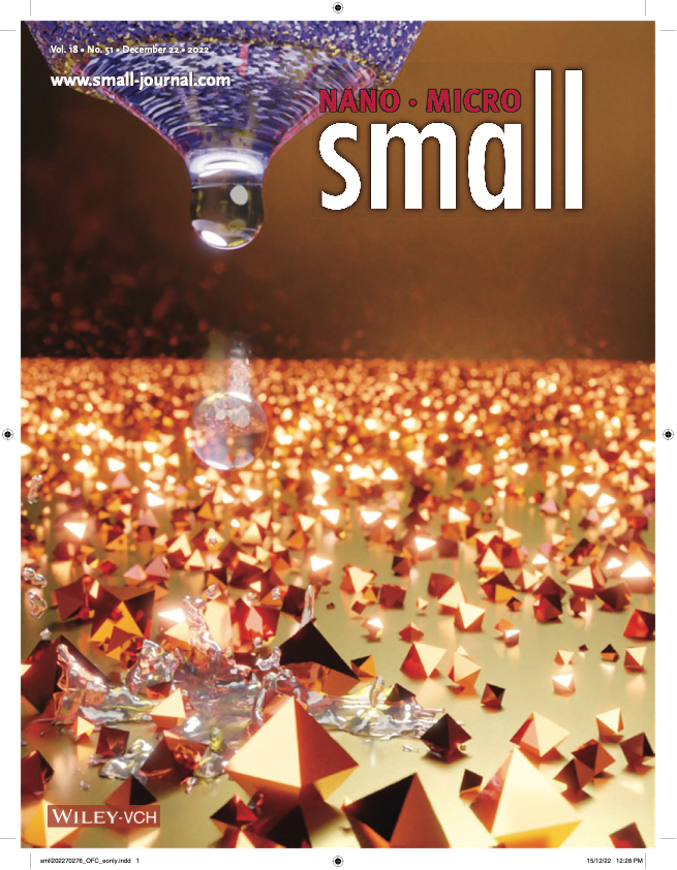Targeted Additive Micromodulation of Grain Size in Nanocrystalline Copper Nanostructures by Electrohydrodynamic Redox 3D Printing
In their latest work, Maxence Menétrey and co-workers from the Laboratory for Nanometallurgy present a novel approach for microstructure control in nanopillars synthesized by electrohydrodynamic redox 3D printing. Their Christmas-inspired picture was featured on the cover of the Christmas issue of Small.

The control of materials’ microstructure is both a necessity and an opportunity for micro/nanometer-scale additive manufacturing technologies. On the one hand, optimization of purity and defect density of printed metals is a prerequisite for their application in microfabrication. On the other hand, the additive approach to materials deposition with highest spatial resolution offers unique opportunities for the fabrication of materials with complex, 3D graded composition or microstructure. As a first step toward both—optimization of properties and site-specific tuning of microstructure—an overview of the wide range of microstructure accessed in pure copper (up to >99.9 at.%) by electrohydrodynamic redox 3D printing is presented, and on-the-fly modulation of grain size in copper with smallest segments ≈400 nm in length is shown. Control of microstructure and materials properties by in situ adjustment of the printing voltage is demonstrated by variation of grain size by one order of magnitude and corresponding compression strength by a factor of two. Based on transmission electron microscopy and atom probe tomography, it is suggested that the small grain size is a direct consequence of intermittent solvent drying at the growth interface at low printing voltages, while larger grains are enabled by the permanent presence of solvent at higher potentials.
Menétrey, M., Koch, L., Sologubenko, A., Gerstl, S., Spolenak, R., Reiser, A., Targeted Additive Micromodulation of Grain Size in Nanocrystalline Copper Nanostructures by Electrohydrodynamic Redox 3D Printing. Small 2022, 18, 2205302. external page DOI:10.1002/smll.202205302